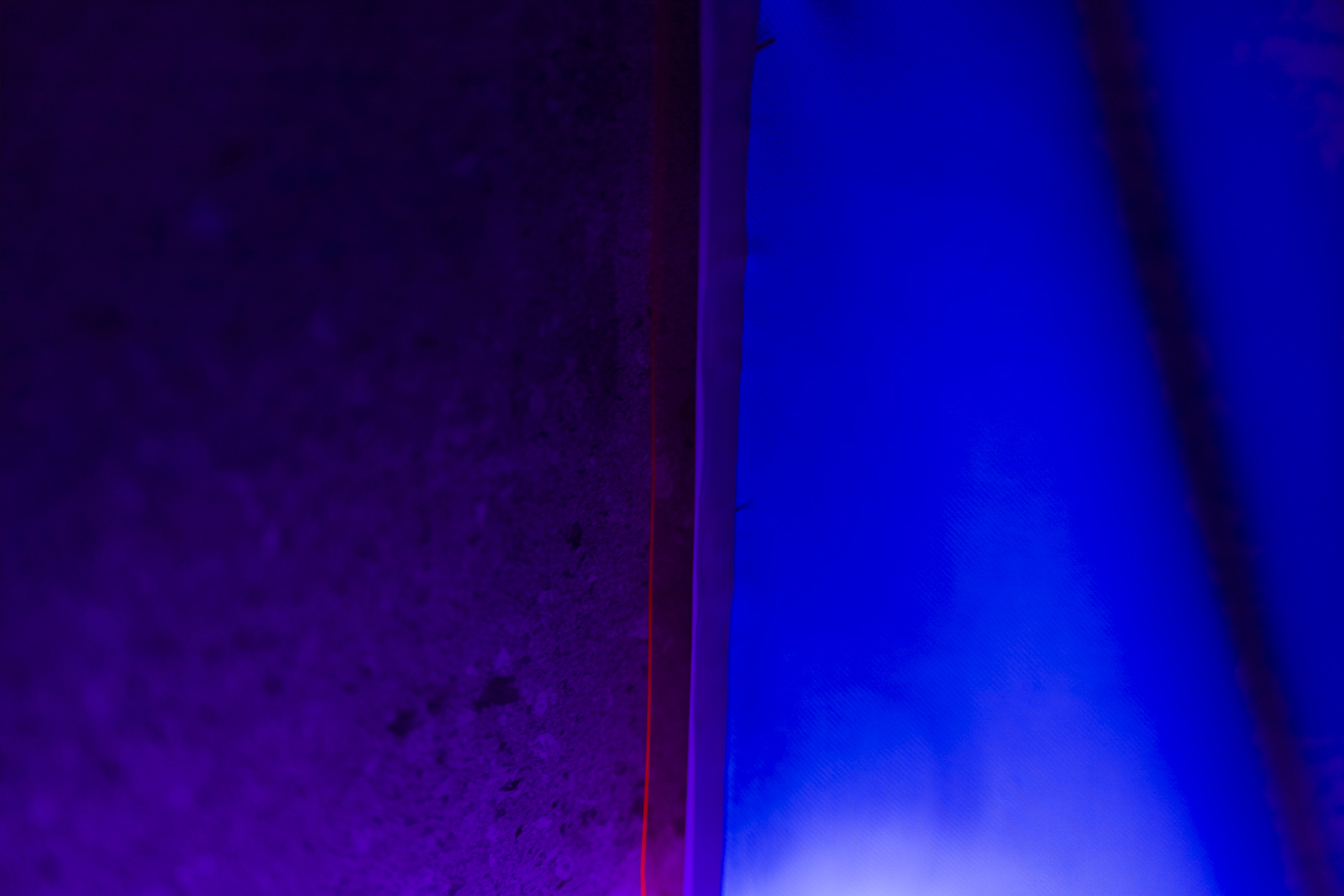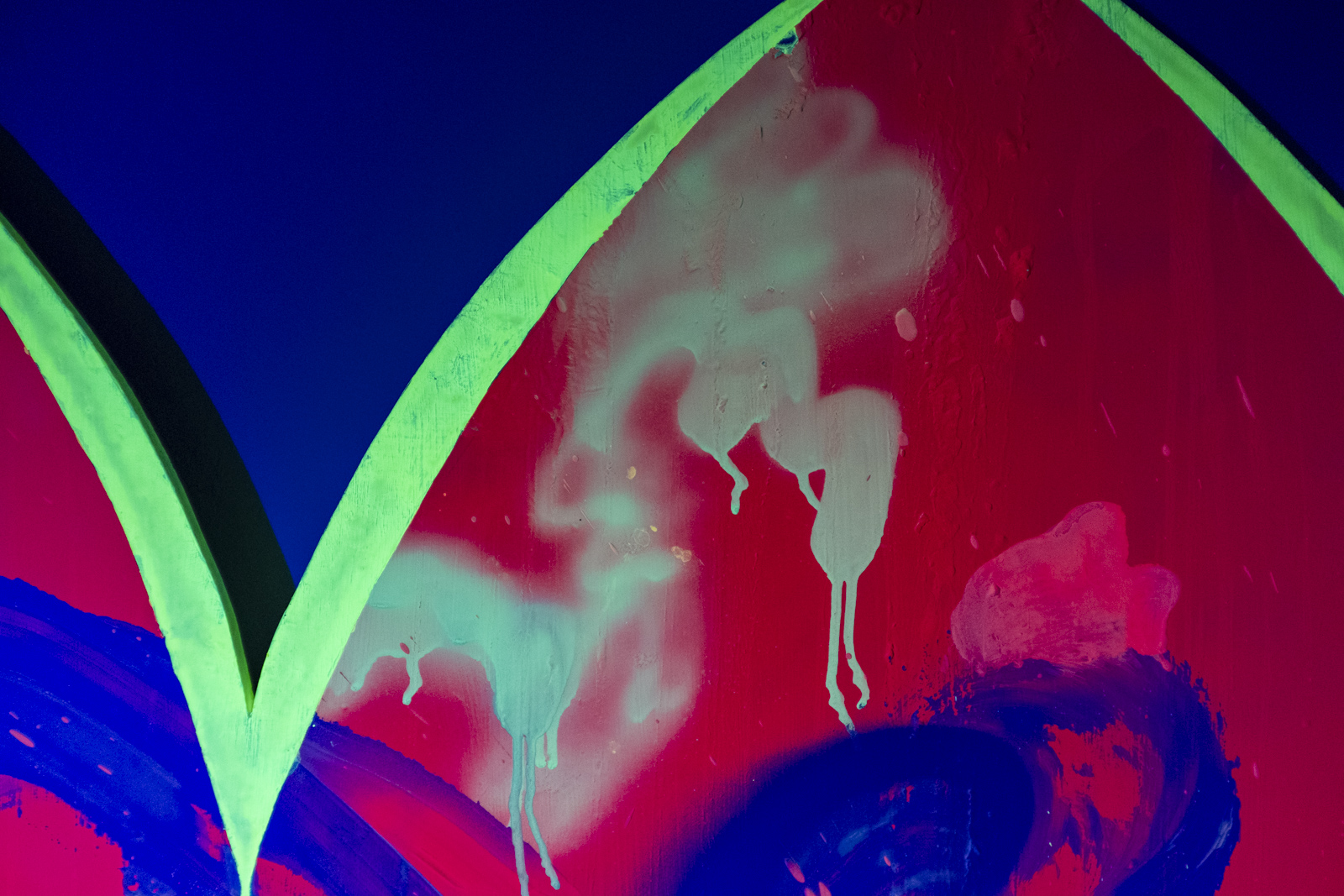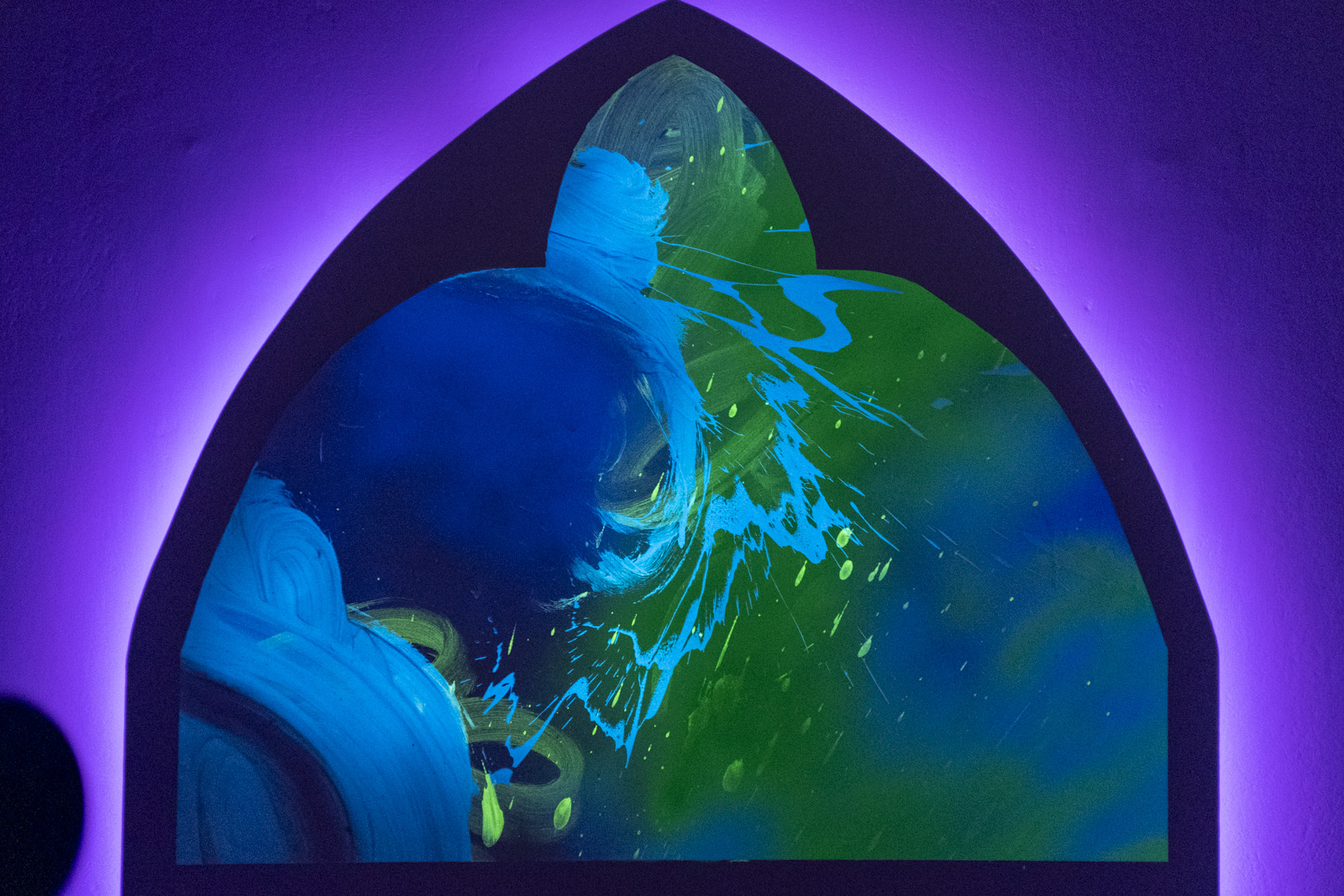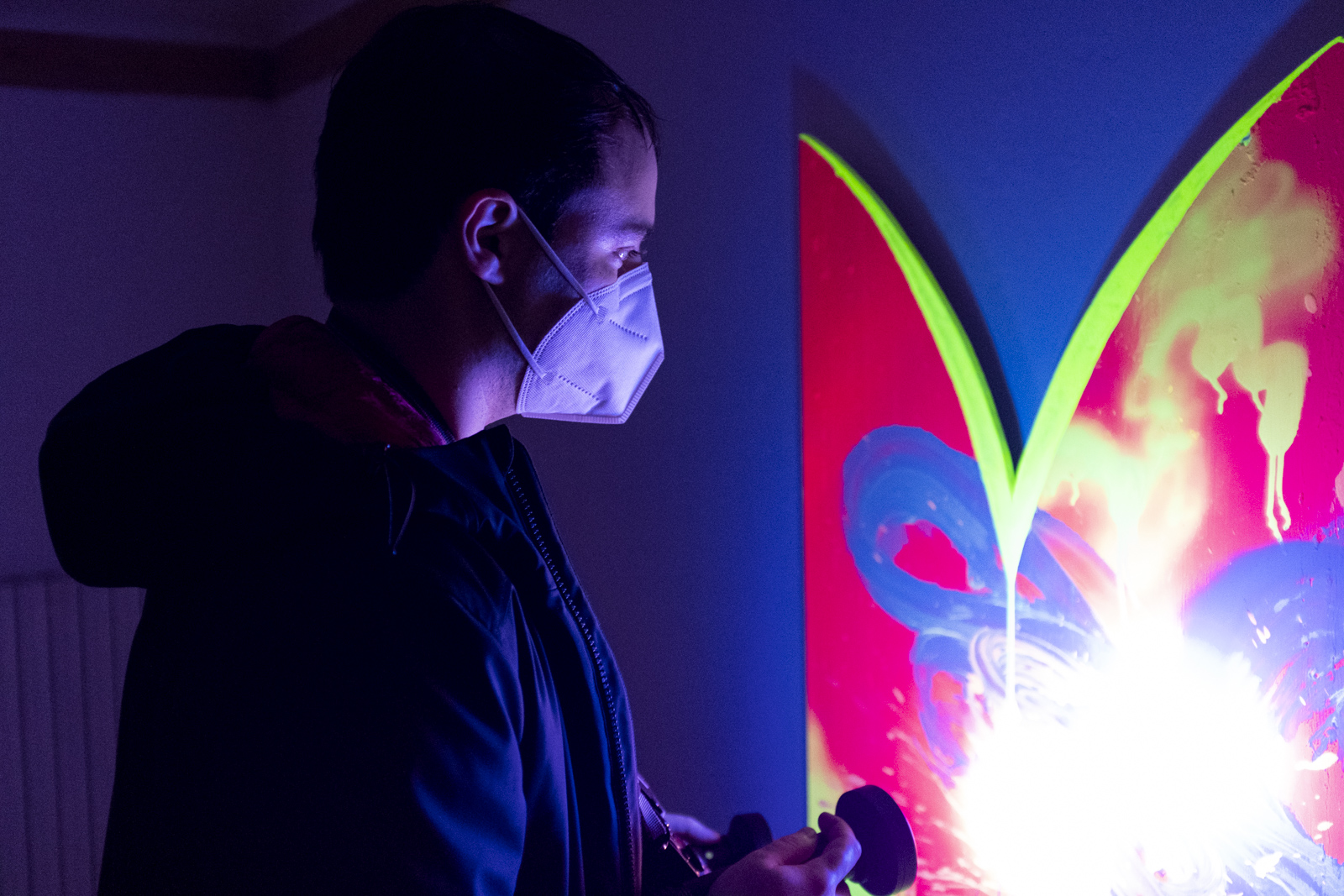TOC
“The Tabernacle” is one of those exhibitions that you meet a little by chance. Venice is probably the most beautiful city on the planet and has an almost endless list of things to see. There is here plenty of choice for art lovers, and running out of things to see is impossible. And if you are among the lucky ones who have been to see every single Bellini painting in the city, you should give me a good reason not to start over. However, if you have the patience to keep an eye on the panorama of private galleries in the city, the situation changes a bit. There has been little supply in the last two years, but this is not necessarily a problem. Indeed, the disappearance of wealthy tourists with a not too polite eye meant that the galleries dared even more. The public with only an uneducated eye is paradoxically more open and ready for simple things, but not for this trivial.
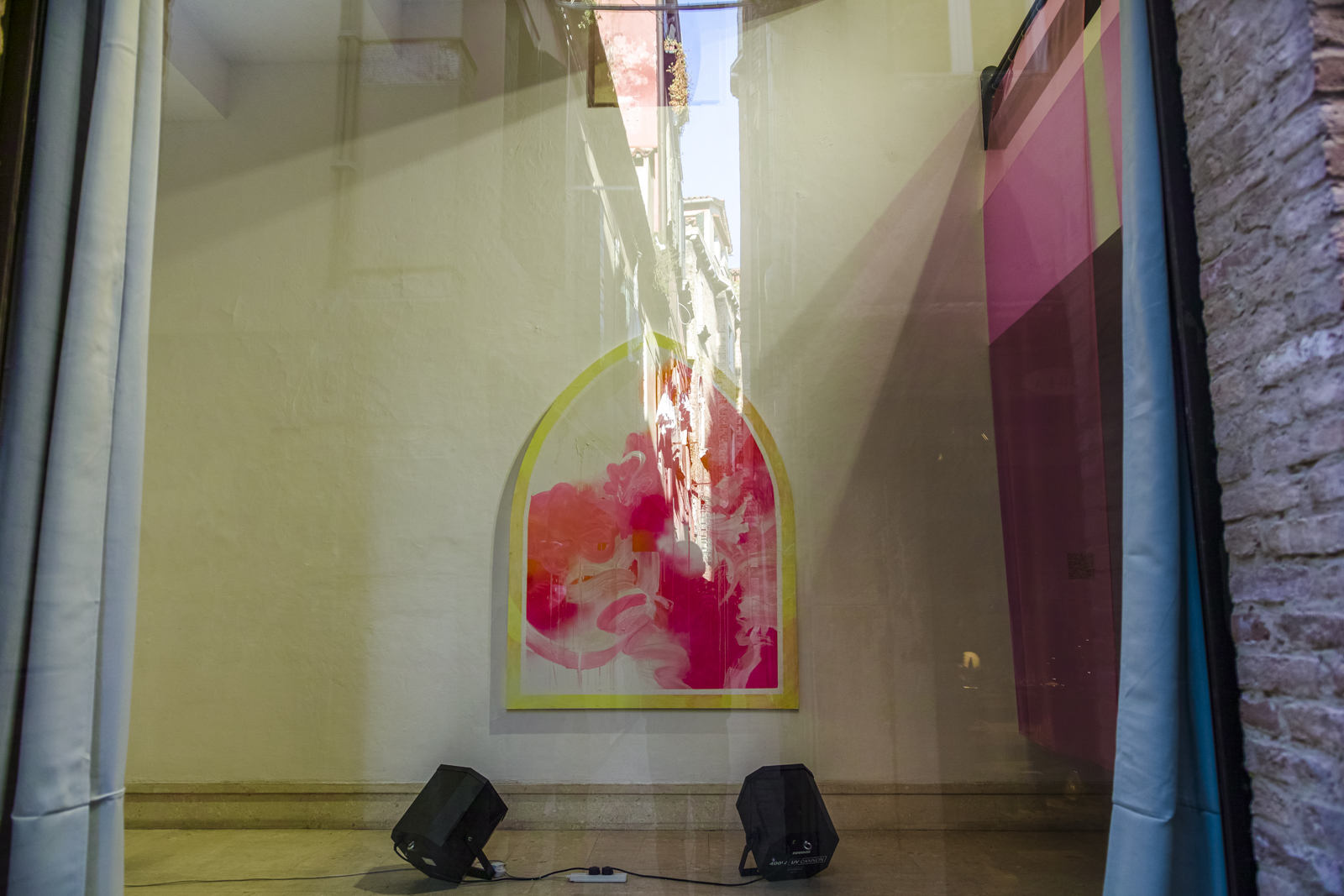
The gallery with the artworks and the city that fade into a game of reflections
This is the case of the exhibition by Kate Dunn, a young English artist until recently unkown to me, and of the gallery A plus A. Located in one of the most beautiful areas of the city, the gallery is surprisingly outside the tourist crossroads, despite being close to Palazzo Grassi. The exhibition, lasting a couple of months, invites the public to “experience the traveling tent of wandering, with a multi-sensory painting installation, through the lens of gabber music’s ‘pharmakon’”. Specifically, these are panels colored with special paints that are also sensitive to UV rays. The viewer first has the opportunity to hear a gabber piece in front of the panels, with a combination of flashing lights. In a second moment, the viewer is walking with a UV flashlight through the empty and dark rooms. It is spectators who choose with their torch what to light up, and their actions also have consequences on the panel. Part of the paint is luminescent and remains brighter for several seconds. It is therefore viewers, to a certain extent, who interact and shape their experience.
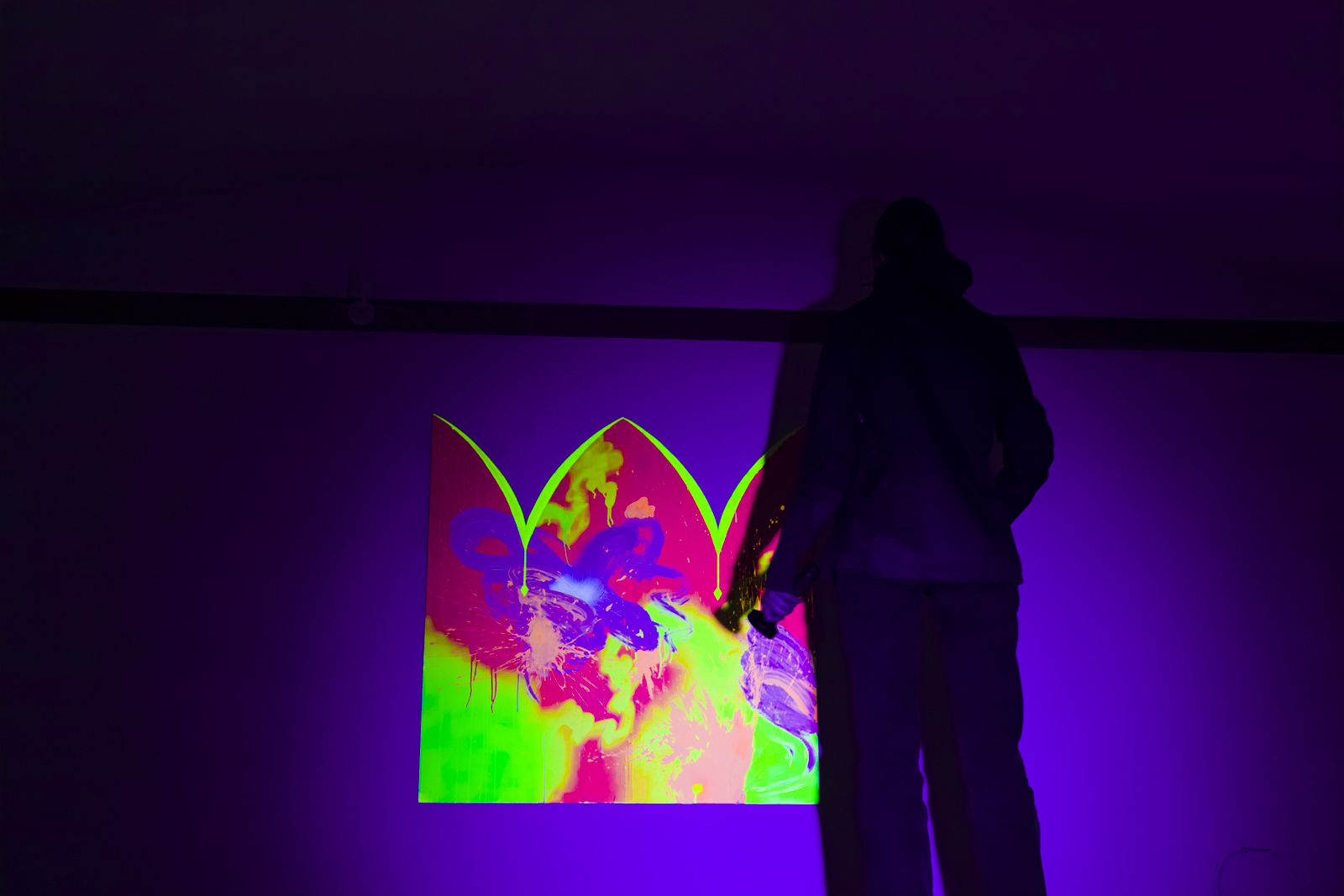
The only light present for a big portion of the exhibition, is the one we choose to points at the paintings
From an aesthetic point of view, the works are immediately fascinating, with their aggressive colors and pounding music. The experience, in general, is pleasant - surprisingly so for contemporary art. However, one immediately wonders: is there anything else besides the beautiful colors? There is certainly a lot in the premises: born as a lockdown project, the idea was to be able to relive a little that sense of sacredness that is found in (some) clubs. If it was the music, the sweat, and the vibrations that were missing, then perhaps the result was not right. We are faced with a work that is too “clean” and a place that is too bourgeois to return those sensations that we are prevented from experiencing at this moment. If, however, the aim was to achieve that sense of sacredness, to which that subculture would like to refer, then the discussion becomes more interesting.
First of all, we must remember what the original meaning of Tabernacle is. In the Jewish tradition, it was the tent that the divine presence physically inhabited. Although the Hebrew god is by definition transcendent, it still had a point of contact with his people. That point was precisely the tabernacle, which traveled with the people of Israel in the wilderness. At a certain point (Samuel 2) David asked the prophet Nathan if it was time to give Jerusalem a stable home to God. The response he received was rather sarcastic: “Would you build me a house to dwell in?” The sense was that the divine could not be encapsulated into something similar to us, with our logic, but it had to keep its dimension. Instead, it is God who promises David that he will have a home and offspring. This is because in the Jewish tradition it is sacred that shapes us, and not vice versa!
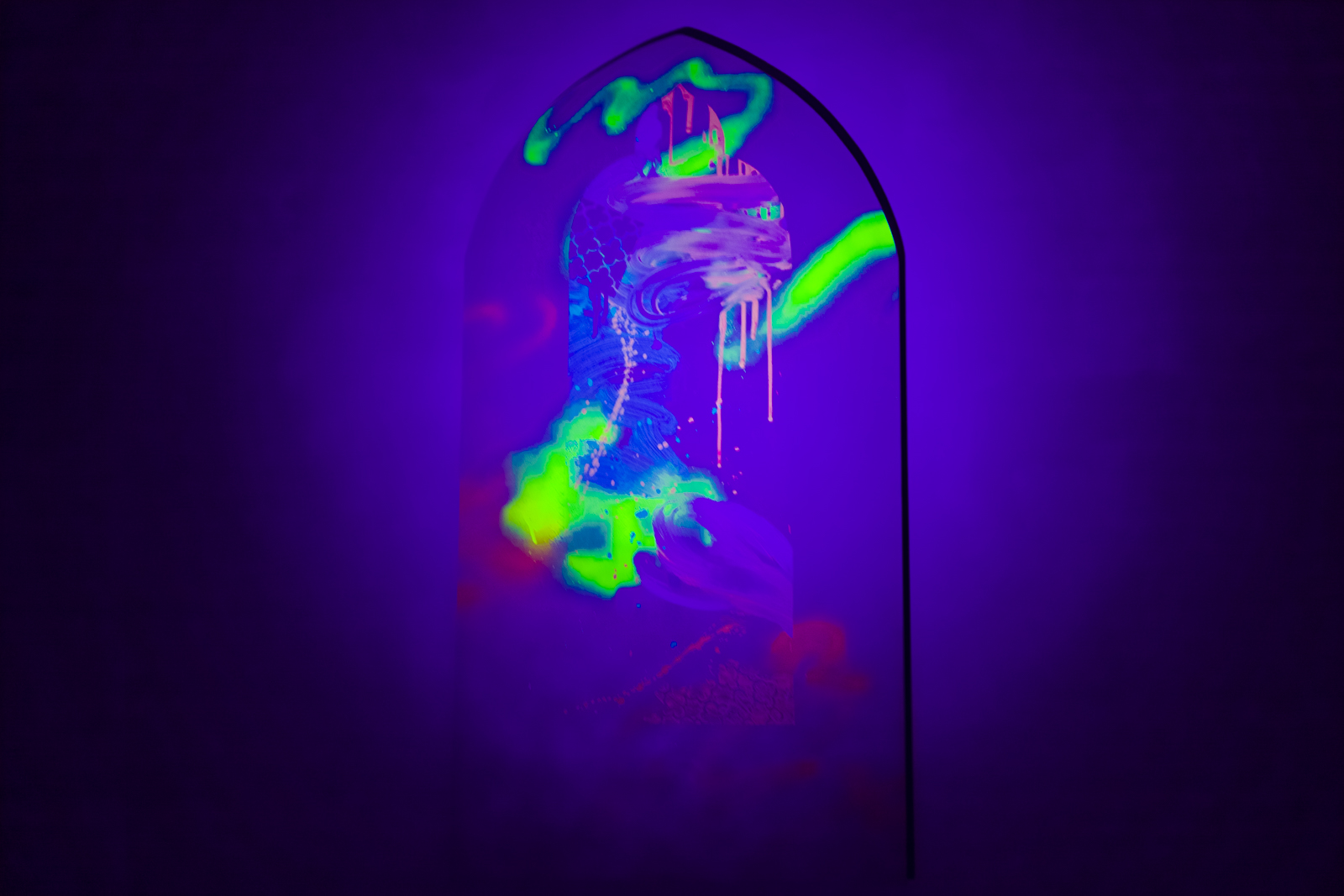
It is difficult, in truth, not to perceive the sense of sacredness that the panels emit when they are illuminated
In this sense, “The Tabernacle” is a very successful installation: it is the very presence of those paintings that makes us perform a series of actions and gives us a space in which to live. It is a space in which we perform actions and we feel good, what is it other than a house? Despite this meaning, however, we are not dealing with a Jewish work, but with an almost site-specific one. The gothic shape of the panels is a clear homage to the Western and Venetian tradition, with those colored glasses always present in sacred places. Nothing new, those who are mindful of Flavin’s lesson will say. Not entirely, allow me to answer. If the search for the creation of space is a constant in contemporary art, this attempt to mix painting and gabber culture is interesting. What one wonders, however, is perhaps whether the gabber culture painted as a place of transcendence ever existed. Apart from chemistry, how much transcendence is there or has ever been in rave culture? I am not an expert, but speaking with people who frequented it 20 or 25 years ago the answer was often “little or nothing”. But maybe it doesn’t even matter, if we all look at that past with indulgent nostalgia, we will be the ones to create the myth of a time when music was literally pharmakon.
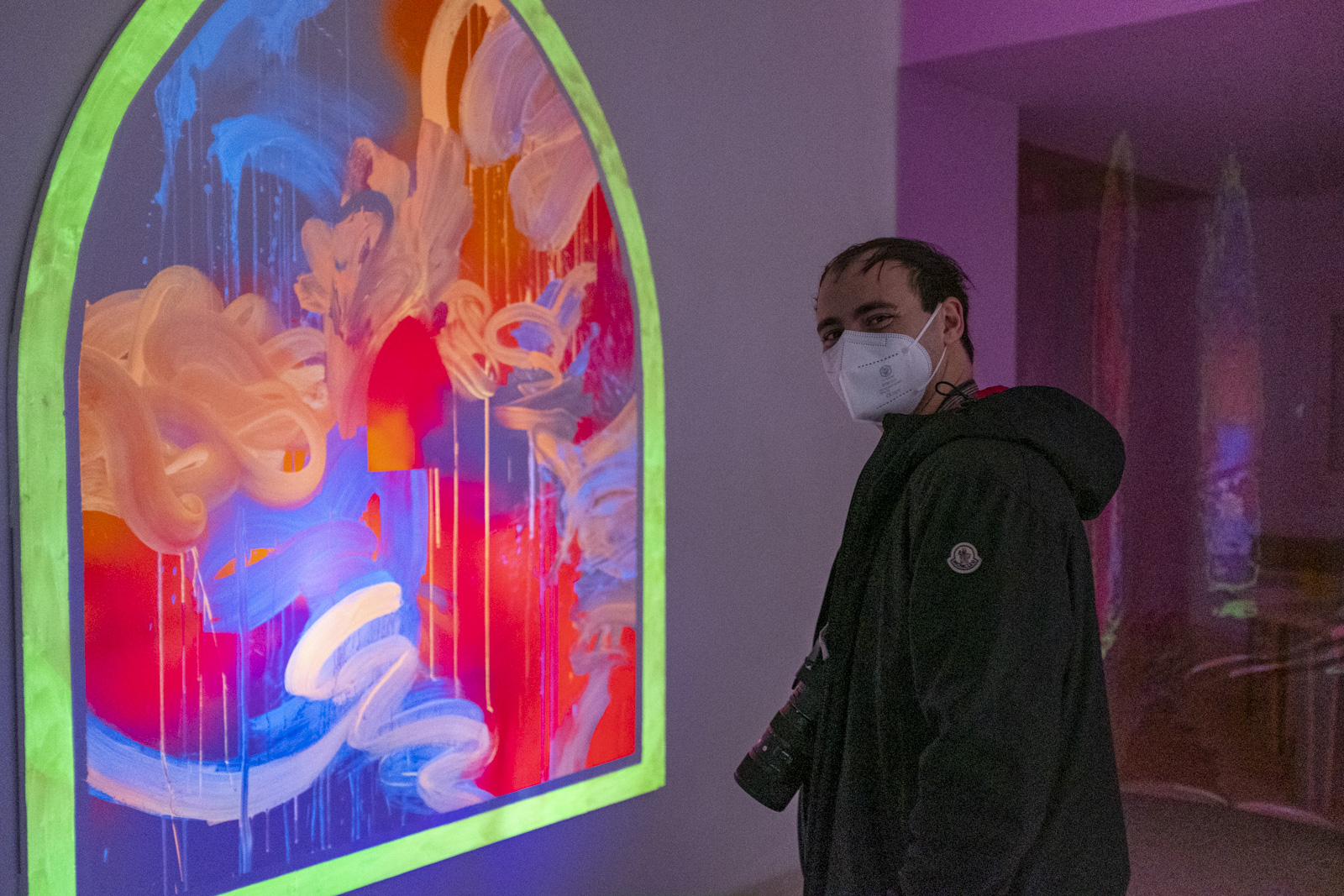
As you can clearly see, the writer of this article was quite happy of the show!
The biggest risk is this: to combine such a peculiarly Jewish concept with such a modern conception of music and sensoriality. The danger is to be trivial in the conclusions, or in the attempt to formulate them. Certainly, however, it is an interesting way to explore and, even if it were not, the pure aesthetic value of the work is sufficient to justify such an exhibition. This is what I like in contemporary art: the ability to convey complex concepts and start interesting discussions, without sacrificing aesthetic pleasure.
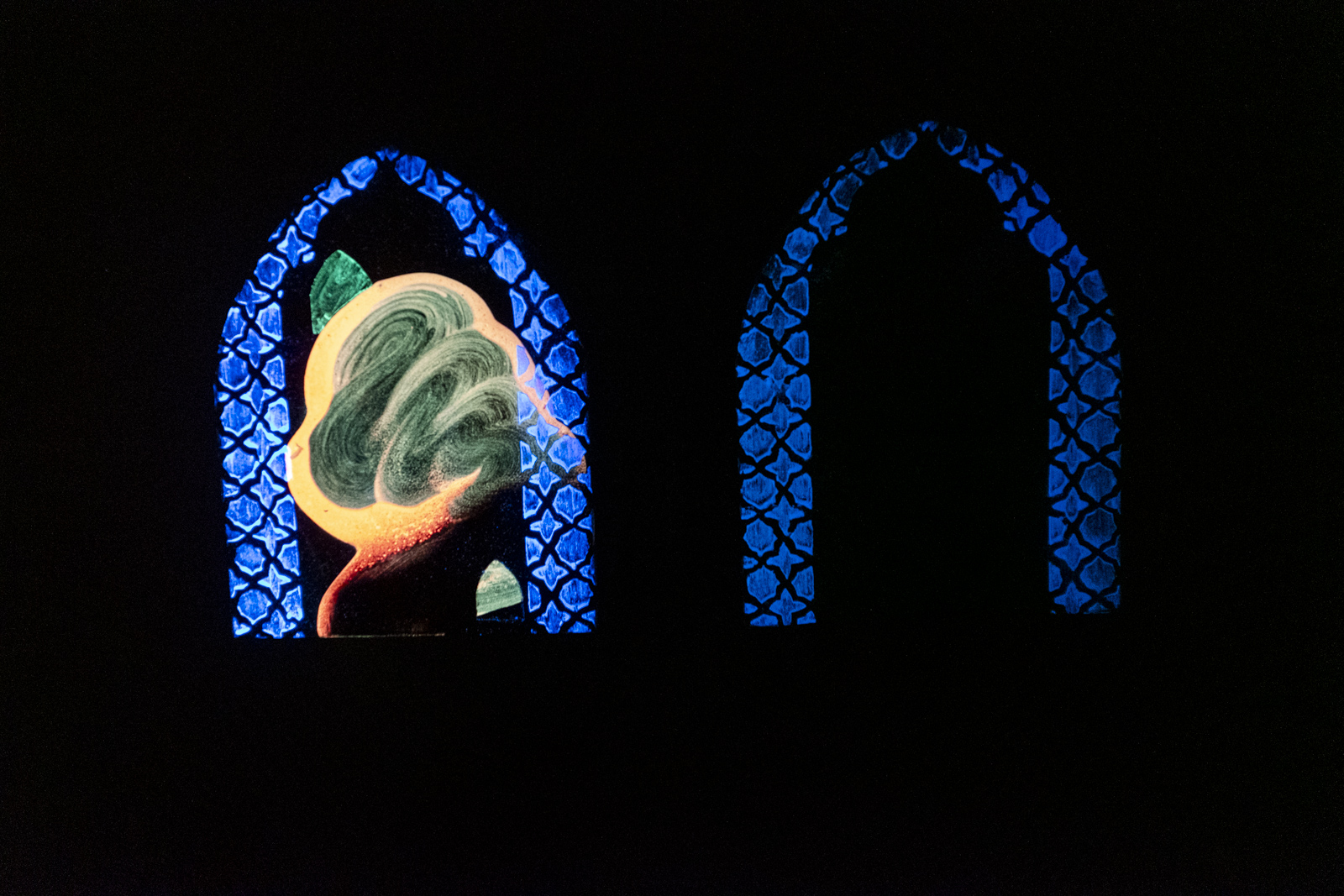
What we bring to light and what we don’t is always a choice

